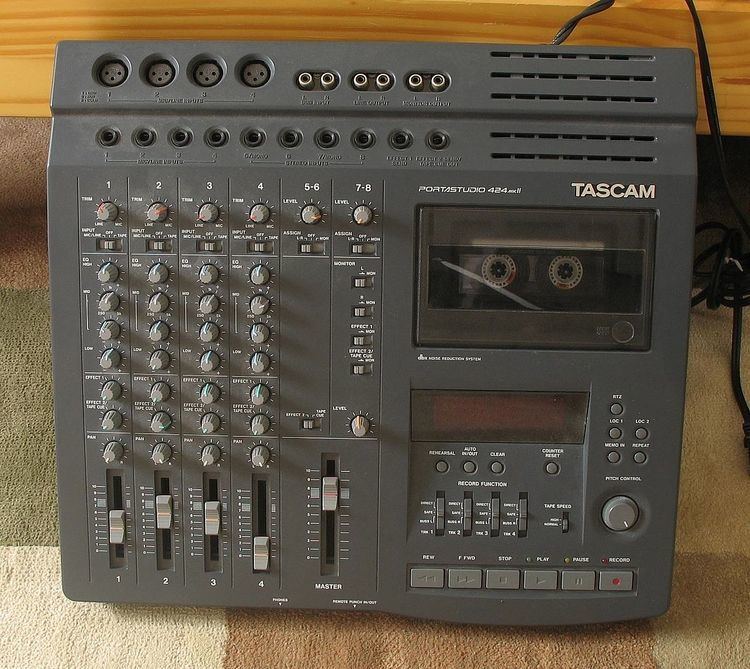 | ||
The TASCAM Portastudio was the world's first four-track recorder based on a standard compact audio cassette tape. The term portastudio is exclusive to TASCAM however it is generally used to describe all self-contained cassette-based multitrack recorders dedicated to music production.
Contents
The Portastudio 144 made its debut in 1979 (priced at about Can$1200) to be followed by several other models by TASCAM and eventually by several other manufacturers. For the first time it enabled musicians to record affordably several instrumental and vocal parts on different tracks of the built-in four-track recorder and later blend all the parts together, while transferring them to another standard, two-channel stereo tape deck (remix and mixdown) to form a stereo recording.
These machines were typically used by artists to record demos, although they are still often used in lo-fi recording. The analog portastudios by TASCAM (a division of TEAC) and similar units by Fostex, Akai, Yamaha, Sansui, Marantz, and others generally recorded on high-bias cassette tapes. Most of the machines were four-track, but there were also six-track and eight-track units. Some newer digital models record to a hard disk, allowing for digital effects and up to 32 tracks of audio.
One widely used model was the TASCAM 424 (in three versions), which offered a great deal of flexibility while still remaining inexpensive to use. Prior to the advent of digital recording, the 424 was an affordable way for bands to record demos or even commercial albums.
Notable usages
Books
Using Your Portable Studio by Peter McIan (1996, Amsco Publications)
